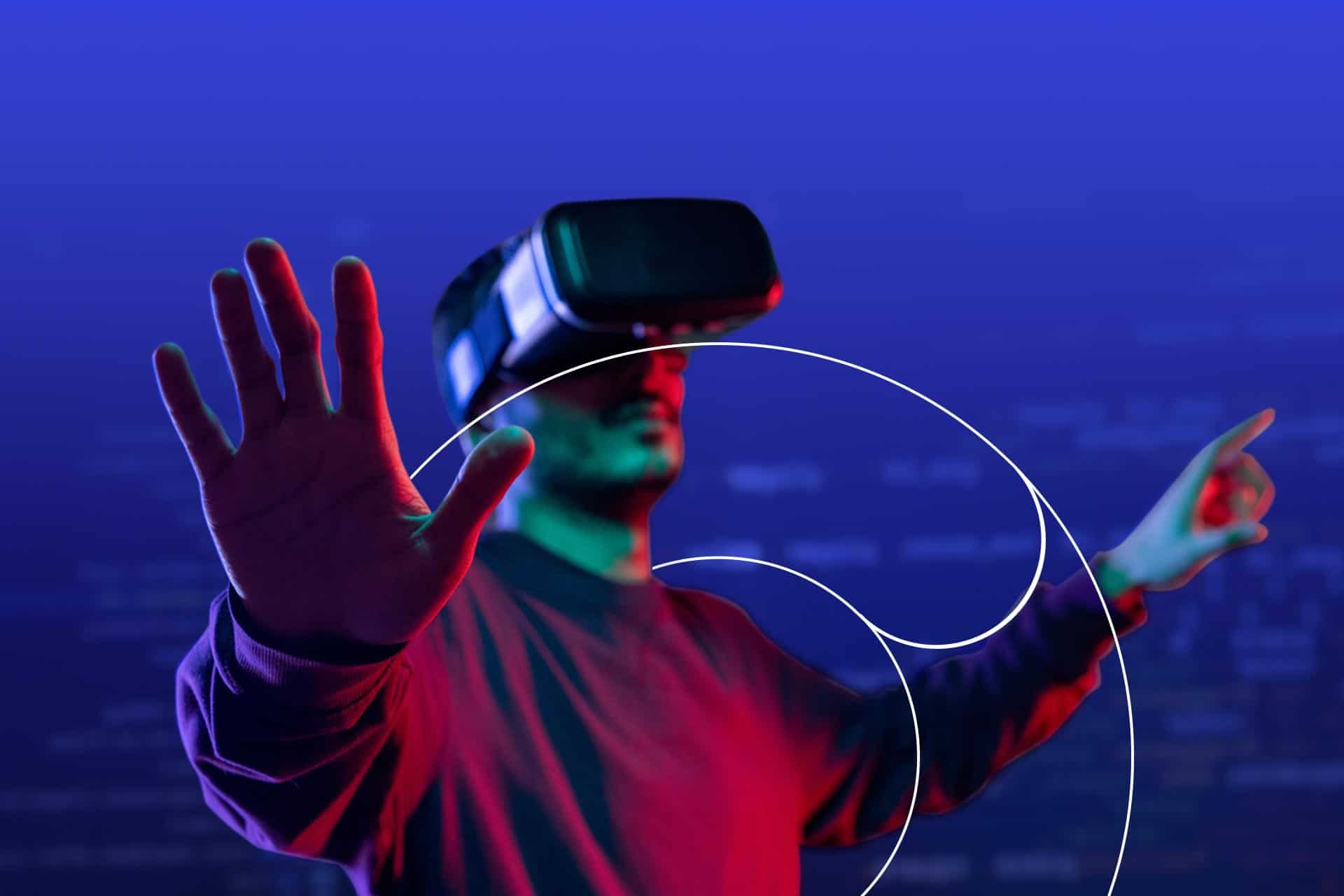



Revolutionized is reader-supported. When you buy through links on our site, we may earn an affiliate commision. Learn more here.
Augmented reality. Virtual reality. VR and AR. You’ve probably heard people use these terms to describe video games and other programs. They’re becoming much more popular now that technology is allowing software to be more portable. Augmented reality vs virtual reality: What’s the difference between them, and what are the potential applications for each one?
Virtual reality, as its name implies, creates a virtual representation of reality — or, rather, a “particular” reality. It doesn’t necessarily have to be the real one.
The idea behind virtual reality has been around for a while. The term itself was coined in the 1980s when the founder of VPL Research developed a set of goggles and gloves that allowed users to explore a virtual environment. This virtual reality was rudimentary compared to the VR headsets you can purchase today, like the HTC Vive and the Oculus Rift.
The 1970s and ’80s saw NASA working on the Virtual Interface Environment Workstation. It paired a VR headset with a set of haptic gloves to enable users to interact more directly and convincingly with the virtual world.
Today, you can even use your cell phone to explore virtual worlds with things like Google Cardboard or Samsung’s VR headset. Simply place your phone in the headset and you’re off to explore worlds unknown.
Augmented reality takes the idea of the virtual world to a whole new level by projecting virtual creations onto the real world. “Pokémon Go” made headlines in 2016, but the idea of augmented reality actually debuted in 1968. The first example of AR was able to display simple wireframe drawings. However, it wasn’t actually called “augmented reality” until the term was coined in 1990.
Now, you can project dinosaurs, Pokémon and other extinct or fictional creatures onto your environment using just your phone as you play various games. Where else could you see augmented reality taking off?
How do augmented reality and virtual reality stack up in real life?
Right now, the most popular use for virtual reality is gaming, but there are plenty of other applications for this advancing technology. People use virtual reality in medical settings for everything from chronic pain management to training new surgeons. Therapists are also using it to treat soldiers suffering from post-traumatic stress disorder.
It’s even possible to make virtual models of homes to comfort patients stuck in the hospital for long periods. Making patients more comfortable speeds up their recovery and reduces the length of their hospital stays.
Designers can use VR to make virtual representations of homes under construction. By providing a 3D model that architects and construction workers can explore, VR helps discover any problems with the designs before it’s time to lay the foundation. The military has used VR for everything from flight and battlefield simulations to virtual boot camps and medical training.
Dentists’ offices can use VR to keep patients entertained and reduce their anxiety during dental procedures. Walmart is even starting to use VR to train its new associates, though it isn’t the only big company turning to virtual reality rather than human trainers.
Sports broadcasts have been using augmented reality since the late 1990s to mark the first-down lines on the television screen. Around this time, the Navy also started working on an augmented battlefield system that gave users a heads-up display that transmitted real-time battle data. NASA used it for flight map overlays during test flights as well.
Today, most people use AR for gaming. “Jurassic World: Evolution” allows you to wander your neighborhood and catch dinosaurs. “Pokémon Go” allows you to do the same with Pokémon. These applications use the phone’s camera to project these creatures onto the environment. So, if you’ve ever wanted to see a velociraptor on your couch or a Pikachu on your keyboard, these games are for you.
AR has many of the same applications as VR: medical preparation, military training and education. AR is still fairly new — at least the version available to civilian consumers — so we haven’t yet begun to truly explore all the potential benefits AR has to offer.
Augmented reality and virtual reality are fantastic tools with more applications than just gaming. As with most computer-related things, the potential applications are limited only by our imagination and our available technology. And with technology advancing by the day, there are plenty of limits that are just waiting to be broken.
It will be interesting to see where the technology goes from here. There are plenty of imaginative people in the VR and AR industries, and while their primary focus might be gaming, that isn’t going to stop anyone from coming up with new and inventive ways to use this quickly advancing technology. Maybe the next step will include virtual classrooms for people who live in rural areas and who want to take specialized courses but can’t travel to physical classrooms.
We can’t wait to see where virtual reality takes us next, whether it’s to the moon, Mars, across the universe or to some fantastic fictional land we can’t even imagine yet. You can already use virtual reality to explore the universe thanks to photos taken by the European Space Agency — so why not use it to explore other universes as well?
Revolutionized is reader-supported. When you buy through links on our site, we may earn an affiliate commision. Learn more here.


This site uses Akismet to reduce spam. Learn how your comment data is processed.